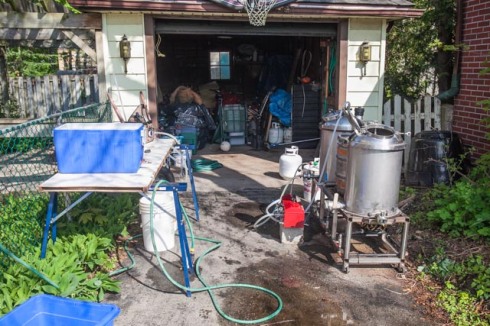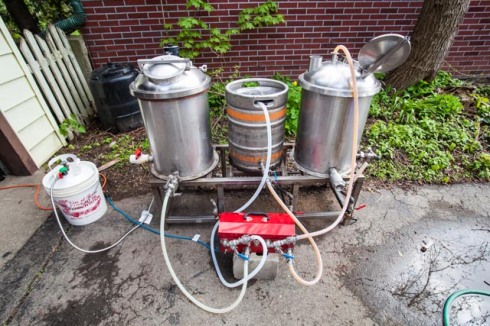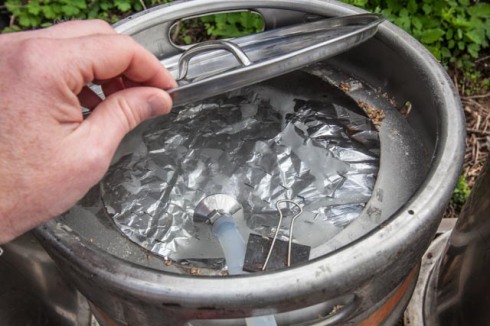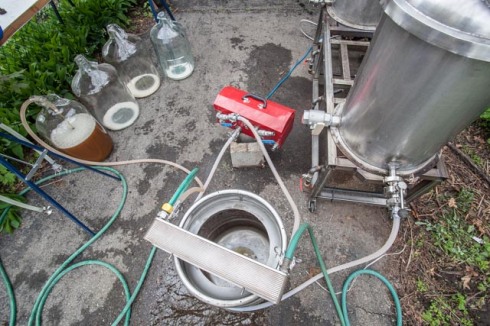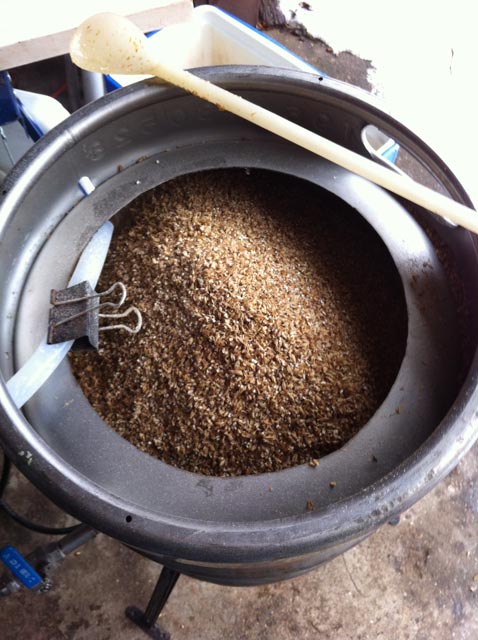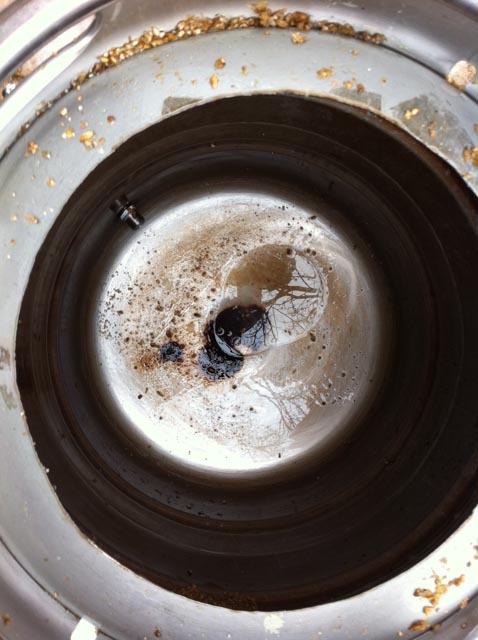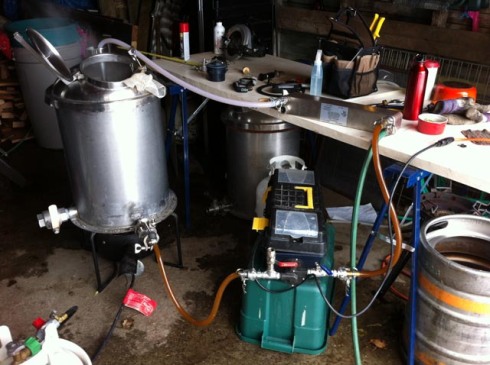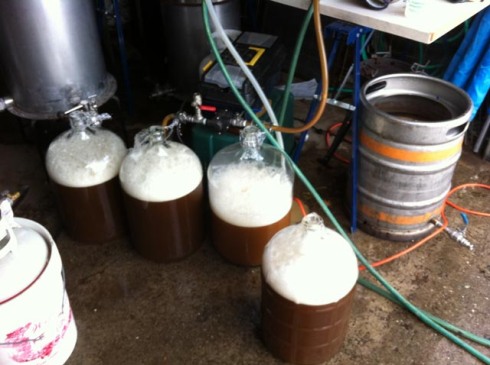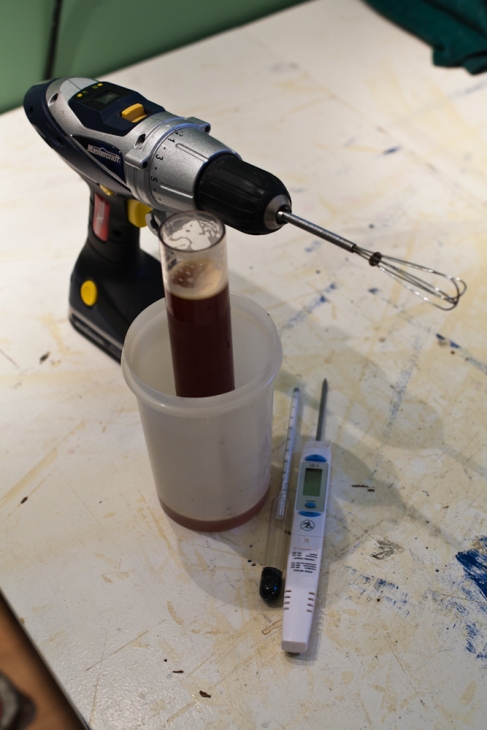It’s all come together! It is, for all intents and purposes, done. There certainly is some tweaking to do and a few bits and pieces on my wish list but it works and makes a bunch of beer in one go.
My last brew day I took some pics to show the set up. Some of the line set up is not pretty but that is part of the tweaking. I’ll just have to have a few more brew days to figure it all out. 😉
This is generally what my driveway/brewery looks like on a brew day. The blue cooler is no longer a MLT but is now a bin to tote material from inside: scale, chiller, pumps, etc.
HLT set up for heating strike water. I recirculate the water as it’s heating just to avoid hot/cold layers. It makes the temp reading up top a bit more accurate. This is one place I could use an inline thermometer.
My fly sparge set up. HLT to pump to MLT. MLT to pump to BK. Flow adjusted so hot water into MLT is roughly the same rate as wort to BK. Works like a charm!
Top of MLT. Foil with holes just to avoid channeling in the grain bed.
Lauter line into BK. I had originally had the line with the tri clamp fitting as the lauter line and had that attached to the top port. This set up is better with the line going to the bottom of the BK. Less splashing, less foaming, easier to see volume when the wort gets near the top.
This is the set up for sanitizing the chiller. For the last 15 minutes of the boil I just recirculate wort through the lines and chiller. The line set up is not pretty and I’ll be tweaking that so that the moving of lines for cooling in and chasing wort with water is a bit easier and smoother. Using the MLT as a chiller stand was a last minute thought and works well. I had originally thought about mounting the chiller on the stand but knowing now how much back flushing is required it’s easier to have it loose for now.
Set up for cooling in. This basically works. The line from BK to pump needs to be on the other side of the keg the chiller is sitting on. Part of my waste water from the chiller is going back into the HLT so that when wort is done in the BK I chase the wort through the lines with the water from the HLT. This is another place I would use an inline thermometer just to adjust the flow and get the pitching temps right, or at least close.
There you have it! That’s basically a brew day on my new set up. Thanks to Clay for the build and thanks to Scott for the gas plumbing and pump box! Fantastic work!
